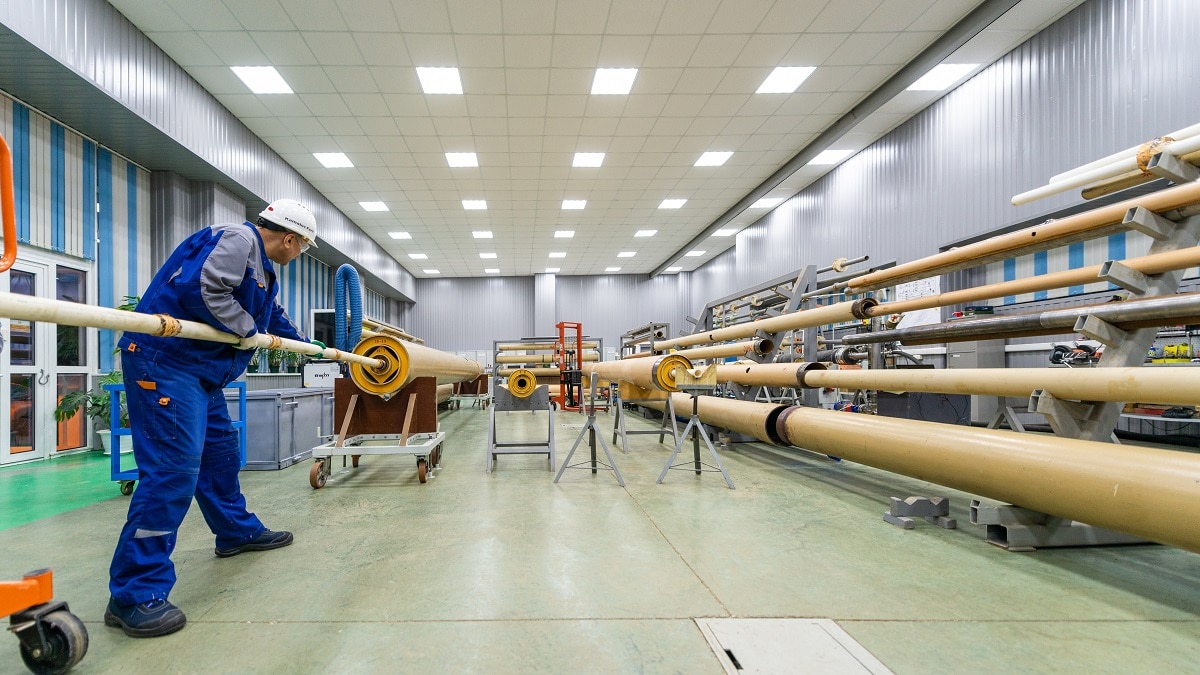A wide range of tubulars are tested in the EmPulse characterization facility at TGT Oilfield Services’ technology center in Kazan, Russia, to ensure accurate metal wall thickness measurements. Wall thickness is an indicator of barrier condition.
A wide range of tubulars are tested in the EmPulse characterization facility at TGT Oilfield Services’ technology center in Kazan, Russia, to ensure accurate metal wall thickness measurements. Wall thickness is an indicator of barrier condition.
Alongside those efforts, companies are increasingly recognizing the value of using diagnostic systems to detect issues that compromise well barriers. “Because most well integrity problems occur in the outer periphery of the well, behind barriers such as tubulars and cement, a process for sensing and locating leaks, or flow paths along the annulus, is crucial,” said Ken Feather, Chief Marketing Officer, TGT Oilfield Services. The company provides “through-barrier” diagnostics using thermal, electromagnetic (EM) and acoustic energy.
The EmPulse multi-tube imaging system produces tube integrity diagnostics. Measurements performed from within the 3 1/2-in. production tubing show significant corrosion in the 13 3/8-in. casing, quantifying metal loss of 34% and 44% in the third barrier.
The EmPulse multi-tube imaging system produces tube integrity diagnostics. Measurements performed from within the 3 1/2-in. production tubing show significant corrosion in the 13 3/8-in. casing, quantifying metal loss of 34% and 44% in the third barrier.
“Barriers, such as tubulars, cement, elastomers, packers and valves must be in good condition and must have good sealing performance,” he noted. “A barrier may look to be in good condition but not sealing. The mechanical properties of cement, for example, may be robust and provide coverage around the annulus, but it may not be sealing properly because of invisible micro-annuli or cracks that cause unwanted flow paths.” Additionally, cement, tubulars and other zonal isolation components experience degradation over time.
EmPulse multi-tube imaging, in its fourth generation, combines electromagnetic sensors with proprietary measurement and modeling techniques to measure the wall thickness of metal tubulars in well systems. “Wall thickness is an indicator of barrier condition and is used to quantify corrosion, which is progressive over time. Severe corrosion can lead to seal failures, leaks and unwanted flow paths, so routine surveillance is important,” Mr Feather said. In the Middle East, known for highly corrosive aquifers, the system has quantitatively recorded the individual tubular thickness of up to four concentric barriers.
